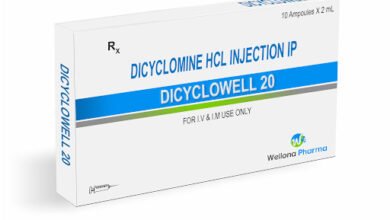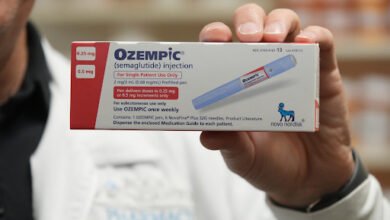Which Foods are High in Zinc?

The body needs zinc, an essential vitamin, for various bodily functions. The mineral aids in the creation of DNA and promotes a healthy immune system and wound healing. Zinc is also necessary for cell division and sensations like taste and smell. As a result, it’s an essential ingredient for promoting healthy growth and development in children and pregnant women.
Since the body cannot create zinc by itself, it must be obtained from diet or supplementation. Although plant-based meals like seeds and fortified cereals also contain zinc, animal proteins like fish and meat are among the finest mineral sources. On the other hand, fruits and vegetables are often poor suppliers of zinc.
Here are some foods high in zinc and some ways to improve your health.
1. Lobster
Other seafood that contains a lot of zinc is lobster, oysters, and crab meat. The amount of zinc in a 3-ounce serving of cooked lobster is 6.18 milligrams. Enjoy this dinner rich in zinc by serving your lobster with beans or peas.
Also, Read 15 Healthy Foods That Are High in Zinc
2. Oysters
With 74.1 milligrams of zinc in a 3-ounce meal of cooked and fried oysters, oysters have by far the highest zinc content of any cuisine. That is 673% of the daily average figure.
3. Crab
Crab is another type of shellfish rich in zinc. 3.0 ounces of cooked Alaskan king crab has 6.48 mg of zinc or 59% of the recommended daily intake. Consume a lot of shellfish to acquire your recommended daily intake of zinc.
4. Pork and beef
Red meat is an important source of zinc. However, beef is frequently noted for its high iron content. Another excellent source of zinc is pork. Make sure to choose leaner meat cuts to assist your heart health if you rely on these proteins to maximize your zinc consumption. For instance, the leanest cut of pig is the tenderloin.
The amount of zinc in a 3-ounce beef chuck roast is 8.44 milligrams. 4 ounces of pork chops have 2 milligrams of zinc per serving.
5. Seeds and Nuts
Foods high in zinc include seeds and nuts, such as pumpkin seeds, cashews, and almonds.
A healthy diet must include nuts and seeds. Unhealthy unsaturated fats and vitamins and minerals, including vitamin E, magnesium, and non-heme iron, are particularly abundant in seeds. According to the Dietary Guidelines for Americans, five ounces of nuts and seeds should be consumed weekly.
For instance, 50 grams of cashews have 3 milligrams of zinc. A great method to improve your daily zinc intake is with cashews. The amount of zinc in three tablespoons of hemp seeds is almost three milligrams. Zinc is present in pumpkin seeds in amounts of 2.2 milligrams per ounce. Per tablespoon, sesame seeds contain 0.6 milligrams.
6. Chickpeas and Other Legumes
Significant zinc concentrations can be found in legumes, such as beans and nuts. A fantastic source of this vitamin is chickpeas. A cup of kidney beans provides 0.9 milligrams of zinc, while a serving of chickpeas (100 grams) has 1.5 milligrams.
7. Cereals
Foods with additional minerals added during production might be good, simple sources of zinc if you’re a vegetarian. Iron and zinc are frequently added to breakfast cereals as fortifying agents. Choose cereals with less added sugar to prevent a blood sugar increase in the morning.
Include fat, protein, and fiber in your cereal for a filling and sugar-friendly supper—for instance, cereal with blueberries, ground flaxseed, and Greek yogurt. Breakfast cereals with added nutrients include Cheerios Grape Nuts, which offer 20 to 100% of the DV for zinc.
8. Chicken
Chicken is a good source of B vitamins, such as vitamin B12, niacin, vitamin B6, pantothenic acid, and zinc. It has been discovered that the vitamin B12 in chicken helps sustain energy levels, improves mood, supports a healthy heart, and advances healthy skin.
9. Eggs
Eggs are nutrient-rich and aid in preventing various ailments, including diabetes, macular degeneration, heart disease, and mood disorders. Additionally, studies indicate that eating eggs may aid with weight loss.
10. Ricotta cheese
Due to the high concentrations of beneficial fatty acids and minerals, such as zinc, ricotta cheese contains, it is one of the healthiest cheese selections. Ricotta is regarded as a “fresh cheese” because it isn’t matured, and research has shown that it has lower sodium and saturated fat content than many other cheeses.
11. Cocoa powder
Epicatechin and catechin, two flavonoids that serve as antioxidants to help prevent inflammation and disease, are found in moderate amounts in cocoa powder. Flavonoids, which are present in cocoa powder, have been shown to enhance blood flow and reduce blood pressure.
12. Kefir and yogurt
Cultured dairy products like kefir and yogurt act as probiotic foods. They have been demonstrated to help maintain a balanced population of good gut flora. Kefir and probiotic yogurt aid in a healthy digestive system, strengthen the immune system, support heart health, and stabilize mood.
Also, Read The Truth Behind Whether Zinc Helps Erectile Dysfunction
How much zinc do you need?
Your age, sex, and whether you are pregnant or nursing all affect how much zinc is in your recommended daily allowance (RDA). The RDAs for zinc for adults aged 19 and over are as follows:
Adults shouldn’t consume more zinc than 40 milligrams daily. That is the maximum amount of food and supplements taken together.
When one consumes too much zinc, they may experience headaches, nausea, and dizziness.
What can happen if you don’t get enough zinc?
Inadequate zinc levels can cause immune system impairment, stunted growth, and developmental delays in children.
Interestingly enough, diarrhea can both lead to and be a symptom of a zinc shortage. So, while persistent diarrhea increases zinc losses from the body, low zinc levels make children more susceptible to diarrheal illnesses.
Low appetite and stunted growth in youngsters are further indicators of zinc insufficiency. Zinc deficiency in adults can affect how well wounds heal and the brain functions. Losses or changes in sensations like taste or smell might also result from a zinc deficit.
It’s crucial to remember that other than zinc deficiency, various other factors can also cause the symptoms mentioned above. Ask your doctor to order bloodwork to check your levels if you are lacking in zinc.
Although low zinc levels are relatively uncommon, certain people are more susceptible to a zinc shortage than others, like
-
Expecting mothers.
-
Young children, adolescents, and infants.
-
Underweight people.
-
People who have persistent diarrhea.
-
Individuals with illnesses including celiac disease and inflammatory bowel disease (IBS) that might hinder vitamin absorption.
-
People with alcohol abuse issues.
-
Vegetarians who follow a strict diet.
Also, Read 5 Foods That Prevent Acne: The Skincare Diet
Conclusion-
The mineral zinc is one that your body cannot produce alone. The nutrient is essential for growth and development and immunological and skin health. Zinc can be found in plant proteins like nuts and seeds and animal meals like fish, pork, and chicken.
Third-country countries frequently experience zinc deficiency. Contact your healthcare practitioner if you suspect you may be deficient in zinc so they may assess your situation and, if necessary, safely raise your levels.
Source link
#Foods #High #Zinc



